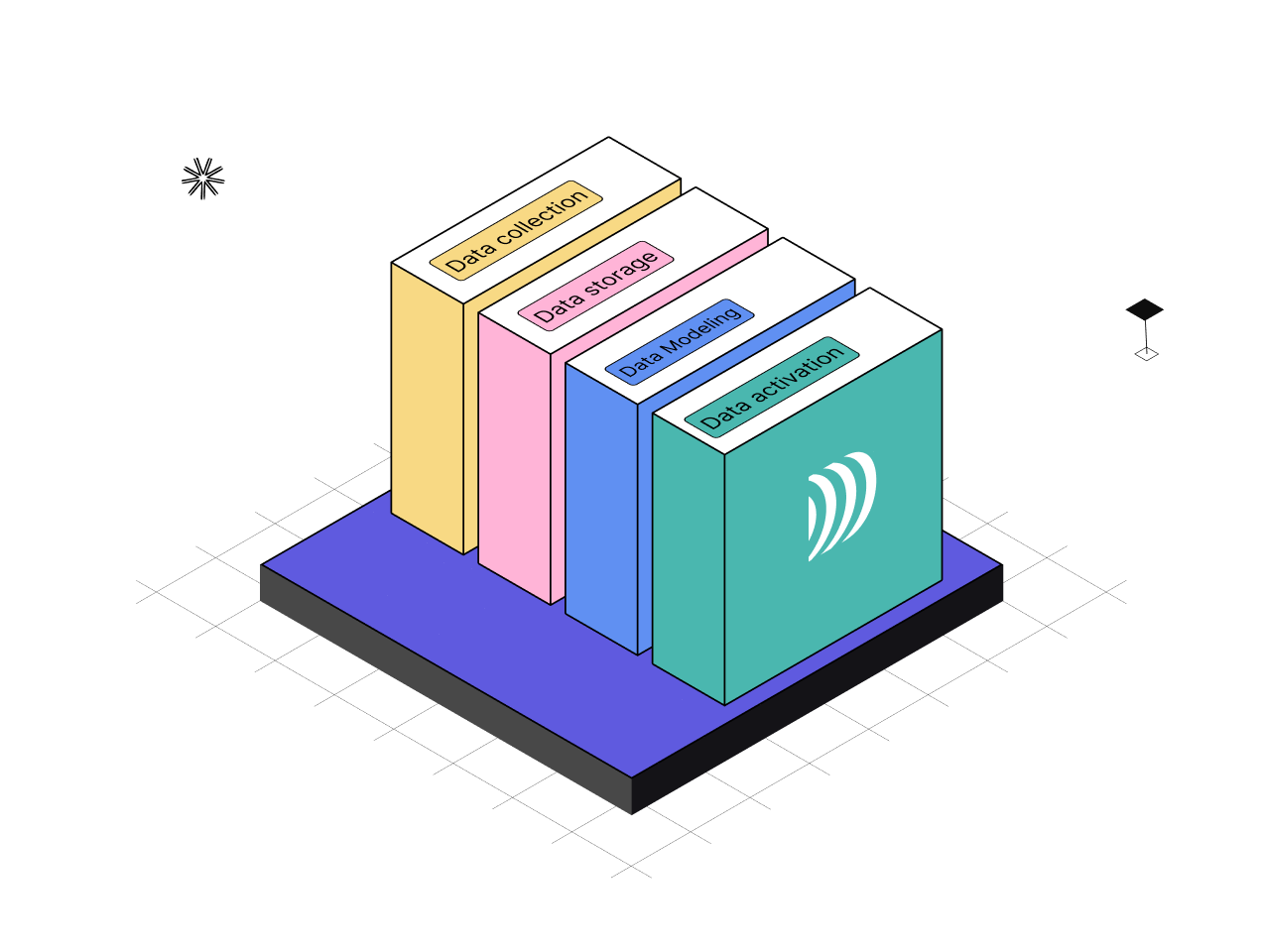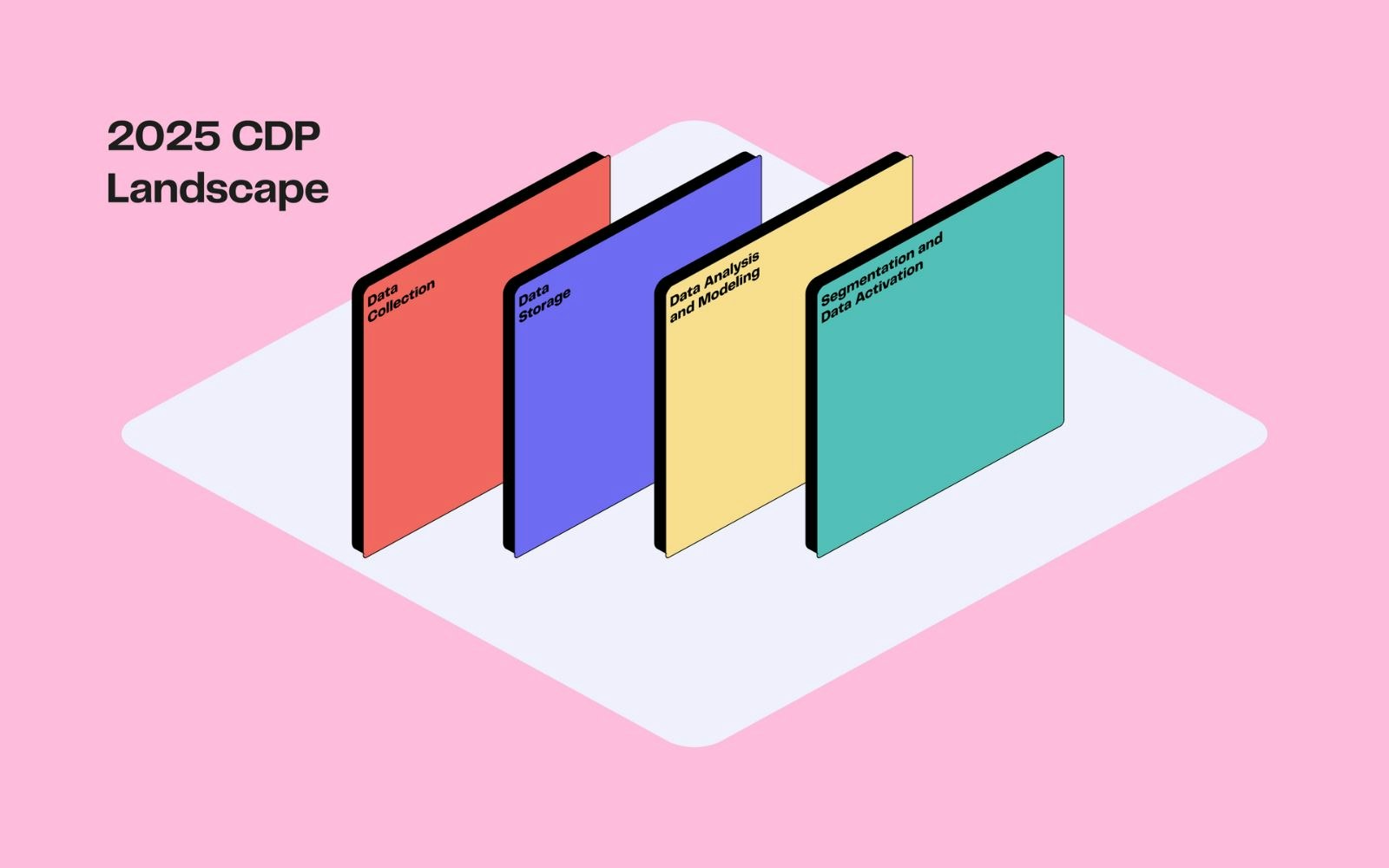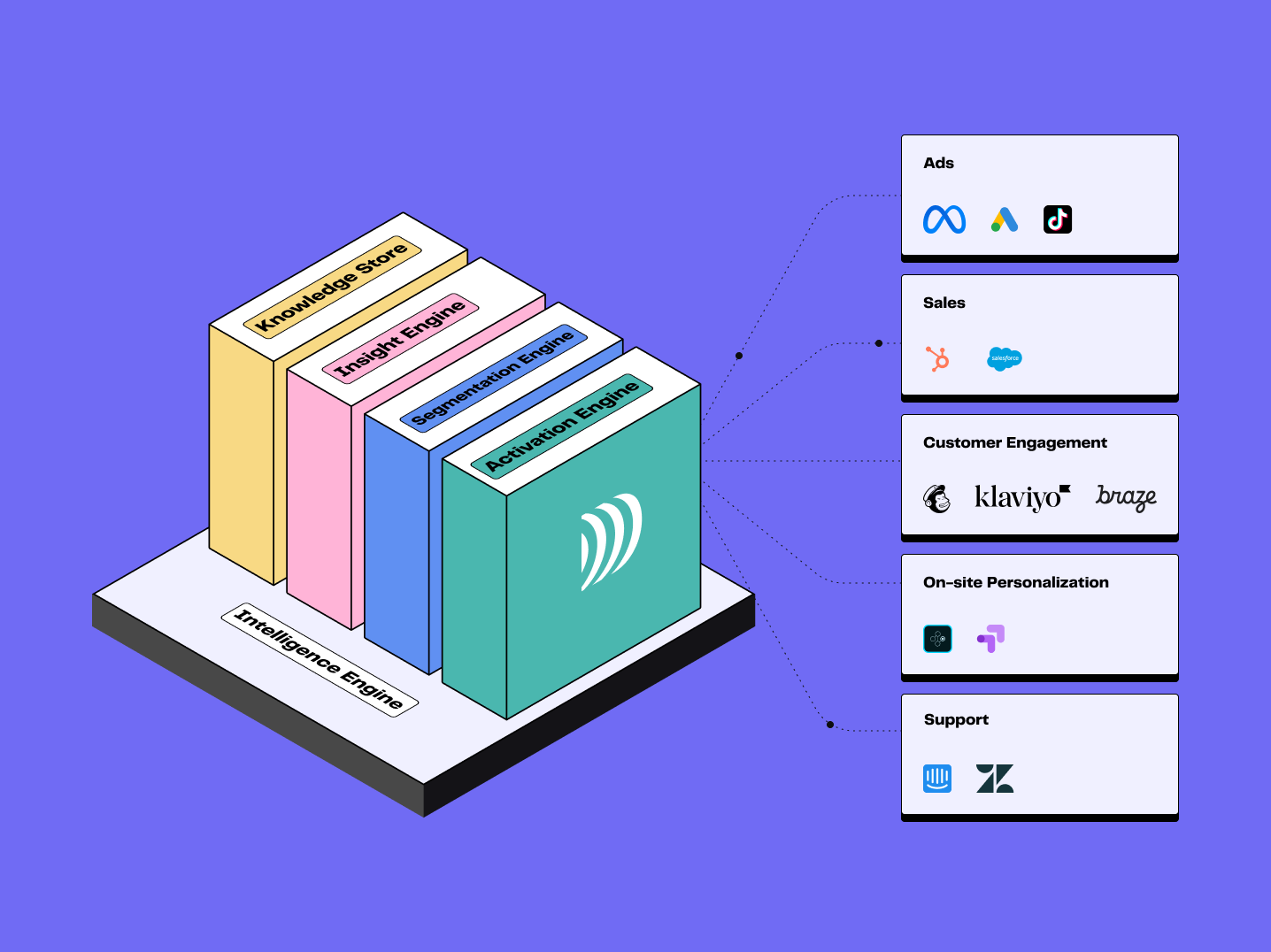
The CDP to improve client operations
8min • Last updated on Mar 27, 2025

Alexandra Augusti
Chief of Staff
The data marketing environment is changing rapidly, and the latest regulatory and technological developments are further encouraging the use of customer data to improve performance. A recent BCG study shows that using proprietary data can reduce acquisition costs by an average of 10%, and increase profit on existing customers by 40%.
To support these changes, the Customer Data Platform (CDP) is the essential solution for managing customer data and implementing marketing use cases. This essential tool helps companies unite and strategically use their customer data, both online and offline. A CDP creates a single view of the customer, crucial for improving customer experience and marketing efficiency.
Choosing a CDP is a major project for companies, requiring a thorough understanding of the underlying objectives. These can range from improving customer relations to personalizing the customer journey and assessing the impact of marketing campaigns. Implementing a CDP is part of an effort to continuously improve processes and the user experience.
👉🏼 In this article, we detail how a Customer Data Platform can become a competitive advantage through better management and activation of customer data. We also detail the various use cases that can be implemented:
Building a Customer 360
Customer view enrichment
Segmentation of customer base
Data activation on all customer platforms to optimize the entire customer journey
Building a unified view of customers
Companies seeking to optimize their customer operations must focus on consolidating and unifying customer data. These steps are vital for assembling scattered information from multiple sources (CRM, SaaS platforms, web or offline events, external identifiers, etc.) and building an integral, coherent representation of the customer. This 360° customer view is crucial to deciphering consumer interactions, preferences and behaviors across various channels and touchpoints.
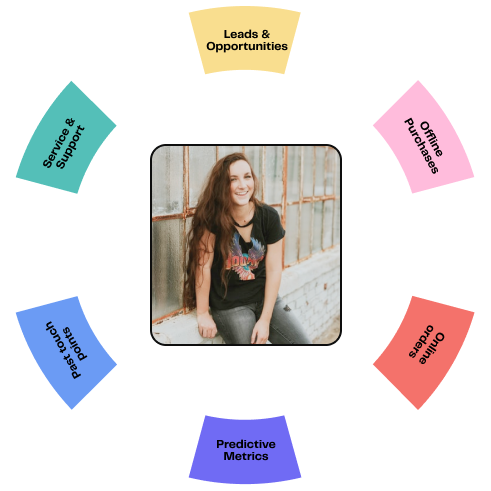
Customer 360, centralising all customer data
💡 A CDP centralizes and integrates customer data from multiple sources in real time, enabling a unified view and personalized marketing actions. Unlike a DMP (Data Management Platform), which focuses primarily on anonymous data and segments for programmatic advertising, a CDP offers a deeper, more individual understanding of the customer, favoring more targeted and effective interactions.
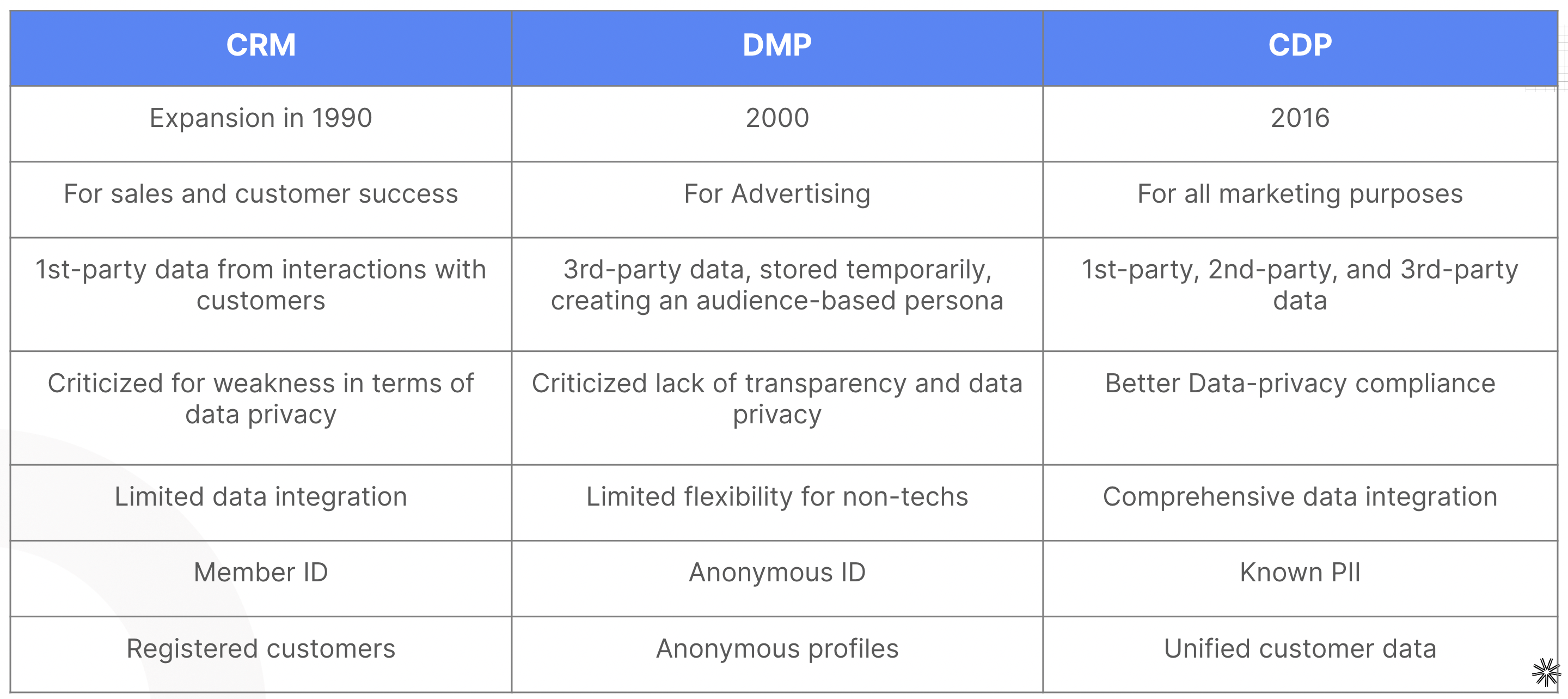
CRM vs CDP vs DMP
Data consolidation involves retrieving information from several sources, enabling us to build a Golden Record for each customer. This corresponds to an individual, organized and complete file (demographic and transactional data, as well as social interactions, product preferences and feedback). Combining web and offline data also makes it possible to measure the impact of multi-channel strategies.
On the other hand, unification aims to align these data in a uniform format, favoring efficient analysis and use of all data. This data can then be used in any tool, regardless of its original source. For example, CRM data can be used directly in an advertising platform.
This unification step may involve standardizing data formats, eliminating duplicates and resolving information conflicts, ensuring seamless accuracy in customer understanding.
Using a CDP to build this customer view subsequently makes it easy to comply with regulations (GDPR, CCPA in particular) and respect the confidentiality of personal data. Consent data is centralized and stored, simplifying its management.
💡 With the advent of cloud storage for data, a "modular" approach to CDP is becoming increasingly popular. In this particular case, the data warehouse can be used as a single source of truth directly enabling the creation of a Customer 360 without the need for new tools. At DinMo, we strive to build a Composable CDP that integrates directly into your existing data stack.
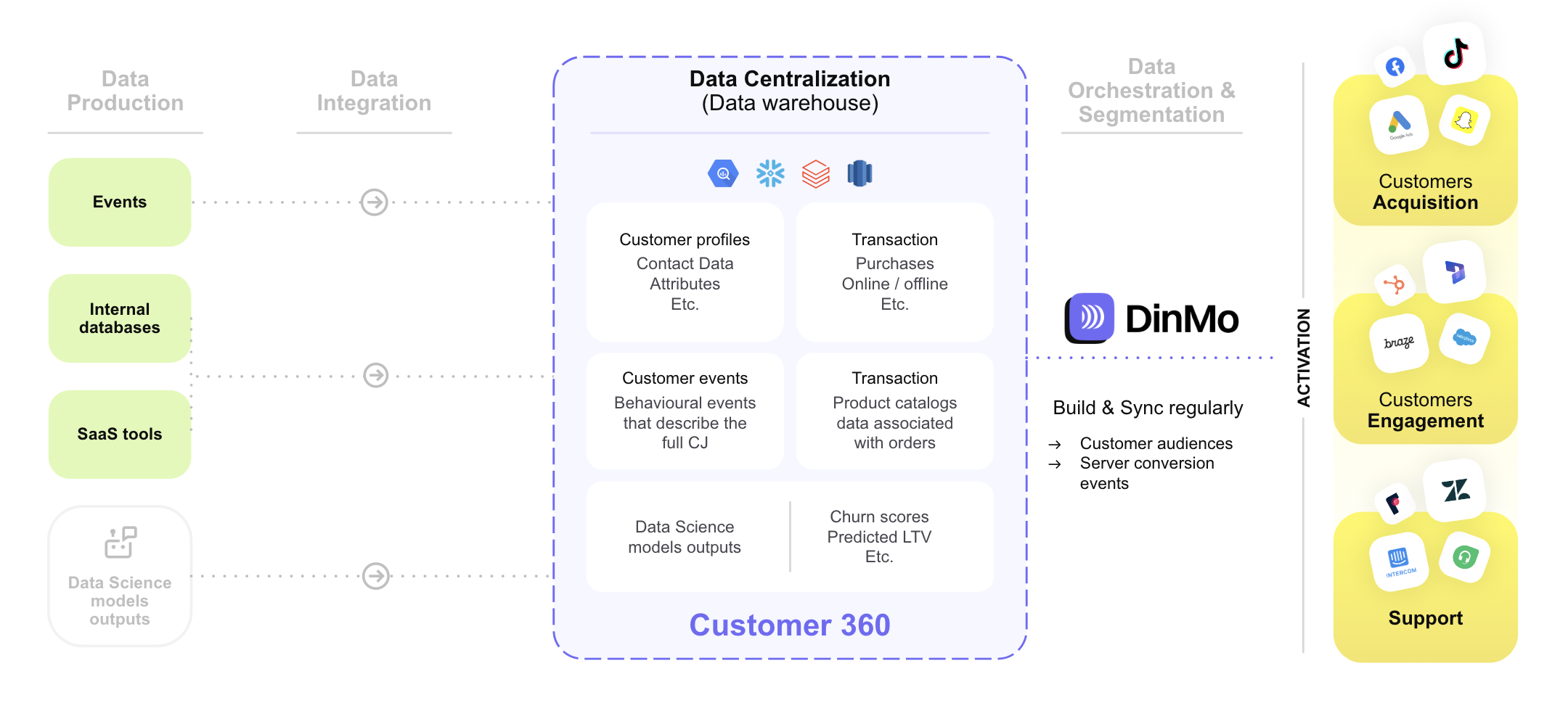
The data warehouse can be used as a Customer 360, as it already centralizes data from many sources
Analysis and enrichment of customer data
Relevant insights directly result from successful consolidation and unification of customer data. They inform not only on the past actions of customers but also allow understanding their future motivations and predicting their behavior. These insights are crucial for creating personalized customer experiences and communicating with customers at the right time.
A CDP also feeds BI tools, allowing easy visualization of KPIs and performance information and signaling anomalies. Your CDP must communicate with the BI tools for all customer data analysis.
Artificial Intelligence and Machine Learning are now crucial for uncovering these insights from a vast dataset. They reveal hidden patterns and trends from an already comprehensive and up-to-date customer database.
The possibilities are numerous: completing your customer view with predictions of interest topics, intention data, predicting the probability of churn, or the expected future Lifetime Value (LTV), etc.
As an example, here are some use cases enabled by data enrichment:
Personalization of communications sent to existing customers based on their interest topics
Real-time product recommendations to known customers based on their intention data
Offering special promotions based on purchase histories (for example, to someone who hasn't purchased in a while)
Ultimately, leveraging these precise and personalized insights allows companies to standout in a competitive market. They facilitate the provision of timely and appropriate offers, enhance customer satisfaction, and boost the return on investment of marketing campaigns. Therefore, consolidation and unification of customer data are key to satisfying customers who enjoy significantly enriched and personalized experiences and services.
Segmentation of the customer data base
Having a complete database is essential, but it's also crucial to be able to exploit it effectively! The CDP facilitates customer segmentation through "no-code" functionalities. This segmentation is centralized, and any change in the definition of a segment is reflected across all systems connected to the CDP.
Optimizing customer journeys through detailed segmentation helps companies identify and meet the specific expectations of different customer segments. By classifying customers based on behavioral criteria, preferences, or demographic data, brands can design tailored experiences.
A CDP also allows identifying under-exploited segments that could be targeted more with new offers to increase the added value of existing customers.
Activating segments across different platforms (CRM, advertising, support, etc.) enables more effective strategies because they address the right person, at the right time, on the right channel.
Improvement of the entire customer journey
With a CDP, companies can use these unified data to enrich the customer experience, personalize offers, and interact more precisely, thus enhancing engagement and loyalty. Better knowledge of customers leads to refined marketing strategies and an improved user experience. Such insight also allows anticipating future needs and behaviors of consumers, offering a unique opportunity to proactively engage them.
The role of a CDP is also to activate the data from the Customer 360 towards "business" tools (advertising platforms, CRM, customer support, etc.), allowing to treat customers throughout their life stages. The use cases mentioned below are just a handful of the opportunities offered by a CDP to optimize customer acquisition, ensure loyalty, and improve lifetime value.
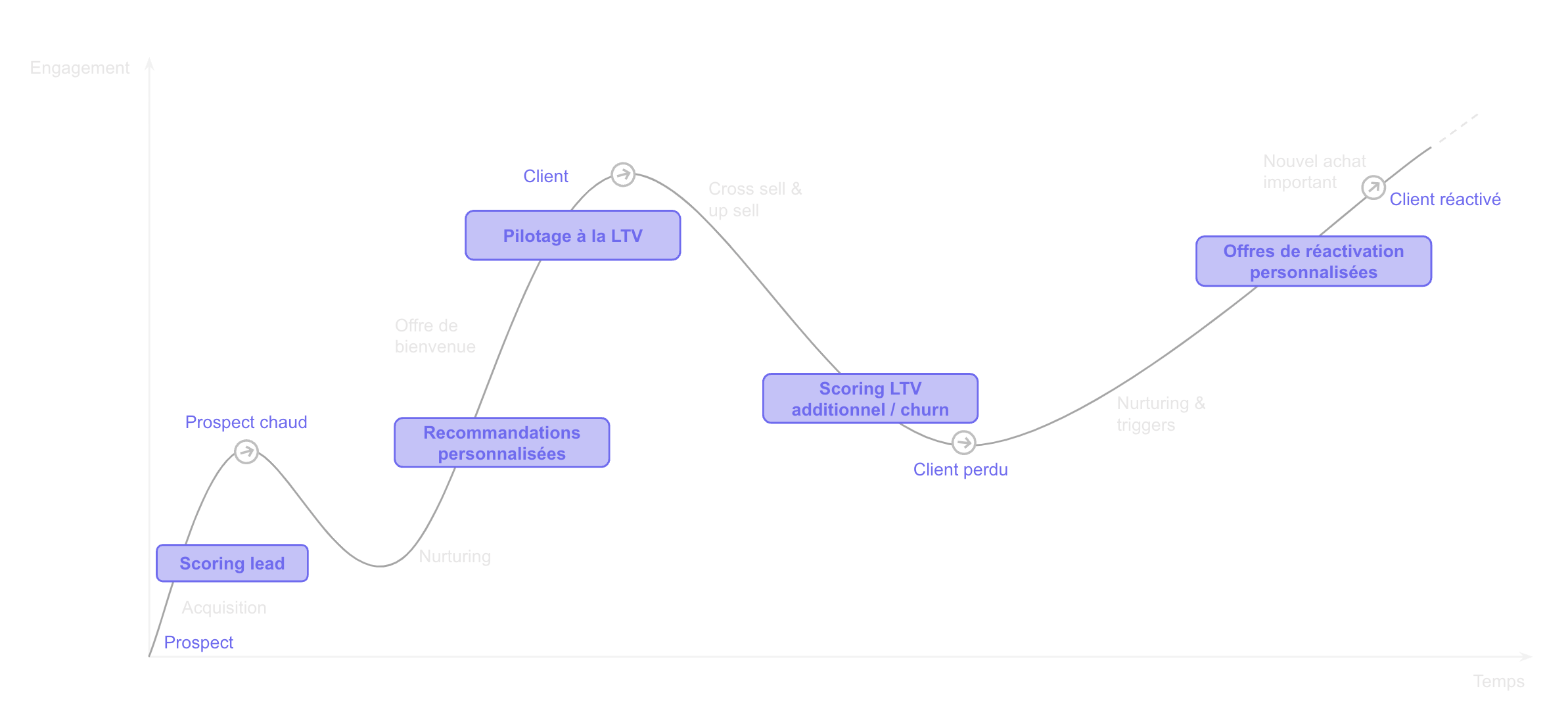
Automation of Marketing Tasks
Although a CDP does not replace a marketing automation system (MAS), it can work in tandem with it to optimize the efficiency of your marketing operations. Marketing automation can often make time-consuming activities like lead qualification and campaign creation less costly. CDPs offer advanced tools of artificial intelligence and machine learning to help automate marketing tasks. A CDP enables real-time campaign activation, giving marketers the ability to launch highly personalized marketing campaigns across all customer engagement channels.
Improvement of Customer Acquisition
The CDP allows for implementing various use cases that significantly improve acquisition.
Firstly, a personalized lead scoring model can be developed directly in the Customer Data Platform. Identifying the best prospects that result allows a company to focus on individuals most likely to convert, optimizing marketing efforts and increasing conversion rates.
Furthermore, the CDP also allows for calculating a customer score. By also identifying the best current customers, a company can create "lookalike" campaigns to target similar prospects, increasing the likelihood of finding new qualified customers.
Finally, the CDP primarily allows segmenting the customer base to address the right person. Therefore, acquisition campaigns must be exclusively directed at individuals likely to convert. Systematically excluding unqualified prospects or existing customers from acquisition campaigns can also be strategic for focusing resources where they are most effective.
Generally speaking, CDP allows you to use your proprietary data (1st party) in all your marketing tools, particularly to improve acquisition. Activating 1st party data can significantly reduce the CAC.
Improvement of retention rate
To improve the retention rate, a CDP plays a crucial role by allowing companies to anticipate attrition by identifying early signs that a customer is likely to leave.
By predicting the churn rate, companies can proactively intervene to retain these at-risk customers: offering preemptive assistance, providing a high level of customer support experience, offering special deals, etc.
Identifying "dormant" customers also allows for retargeting them with specific offers to encourage them to return.
To improve the retention rate, it's essential not to rely solely on "offensive" solutions. Loyalty campaigns and rewards for loyalty are effective means of enhancing engagement and reducing churn.
Increase of LTV
Acquiring new customers is much more expensive than increasing the Lifetime Value (LTV) of existing customers. It's, therefore, in the interest of a company to seek to develop the potential of its customers, promoting upsell and cross-sell opportunities.
The CDP enables identifying products and services of interest and behavioral habits, thus personalizing:
Personalization of advertising communications
Personalization of sent messages, including personal information in each communication (email, SMS, etc.)
Real-time product recommendations (on the website)
Personalized services, for example, on the support chat
Personalization makes interactions with the brand more relevant and engaging for each customer, increasing the value of these relationships over the long term.
By focusing on increasing the LTV for each customer, companies can identify specific strategies to maximize the value generated by each individual. For example, enriching customer data with a predictive repurchase rate allows companies to understand when and how to encourage customers to make their next purchase, optimizing communication moments to stimulate repeat purchases.
Finally, analyzing the behavioral profile of customers can reveal cross-selling and upselling opportunities by identifying complementary products or services that might interest the customer, thereby increasing the total client value.
Acquérir de nouveaux clients coûtent bien plus cher qu’augmenter la Lifetime Value (LTV) des clients existants. Il est donc dans l’intérêt d’une entreprise de chercher à développer le potentiel de ses clients, en favorisant les opportunités d’upsell et de cross-sell.
Integration and consistency of messages
Ensuring seamless communication across all channels is essential for a smooth customer experience. Customers expect fluidity, whether visiting a website, contacting customer service or receiving notifications on mobile.
This requires an integrated and consistent communications strategy, aligning tone, style and content across every touchpoint. This consistency builds trust, reinforces brand credibility and establishes a lasting relationship with customers.
Such a strategy also minimizes confusion and optimizes the effectiveness of marketing campaigns, ensuring that customers receive relevant messages in line with their expectations.
Better ROI measurement and analysis
Accurate ROI measurement and analysis is essential to assess the effectiveness of marketing initiatives. The use of appropriate metrics makes it possible to monitor the performance of campaigns and capture their impact on revenues and business development.
State-of-the-art analytical tools enable live ROI tracking, providing the flexibility to rapidly refine marketing approaches. This includes examining acquisition cost, customer lifetime value, and conversion rate, among others. Ultimately, rigorous ROI analysis guides companies to the most effective channels, encourages more strategic budget allocation, and supports informed decisions for ongoing refinement of marketing strategies.
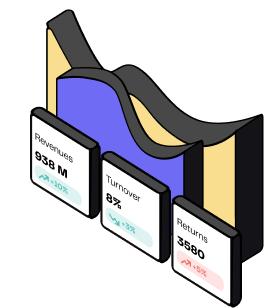
How to make a CDP project a success?
To choose the right CDP, whether packaged (traditional CDP) or modular, there are a few key steps to follow:
Step 1: Involve the right people, to understand business needs, desired data sources or destinations, and clearly define everyone's needs and objectives (including all CDP end-users).
Step 2: Identify the use cases to which CDP is intended to respond, in particular for :
Choose the right software vendors: depending on the functionalities required to implement use cases, certain solutions are more or less suitable. Decide whether to buy a Packaged or a Composable solution by looking at our Comparison guide between CDP and Composable CDP (resource at the end of the article).
Organize the project well, and in particular the deployment of the solution: depending on the importance of the use cases, you can prioritize the functionalities you need to have or develop for your CDP. Doing a pilot project can be a good idea for testing the platform!
💡A modular approach allows you to plan a multi-stage deployment, enabling you to start small. It is then possible to seamlessly add more data, functionality and extend access to the platform to new teams.
Set up your CDP to suit your intended use
⚠️ The value you derive from your CDP is directly linked to the use cases you implement. They are the key to the platform's performance, as they enable you to respond to the issues faced by your teams (marketing, sales, support, etc.). To do this, you need to properly formalize the various use cases (problem, solution, impact, platforms involved, etc.).
Step 3: Measure the impact of solutions on the existing data stack and their ability to integrate with it. For example, by listing the necessary integrations, it's easy to eliminate certain pre-selected editors that wouldn't allow you to connect to them. The advantage of composable CDP is that it integrates directly into your stack.
It may also be a good idea to take other factors into account before choosing a type of CDP: deployment time, data hosting, maintenance processes within the platform, price, etc.
Final thoughts
In short, the Customer Data Platform (CDP) represents a key strategic tool for unifying customer data scattered across different systems, optimizing the management of this data within your organization, improving the user experience, and boosting marketing efficiency.
This article gives just a glimpse of how CDP can be used. Each use case needs to be considered according to the type of business, the industry and the objectives to be achieved.
At DinMo, we offer a composable vision of CDP, integrating seamlessly into your Modern Data Stack and connecting to any marketing platform. This unlocks the potential of the data already stored in your data warehouse.
🚀 Want to learn more about our Composable CDP approach? Feel free to contact us!













